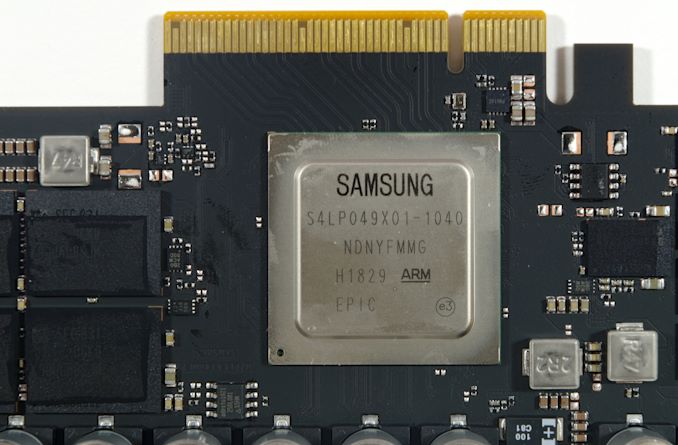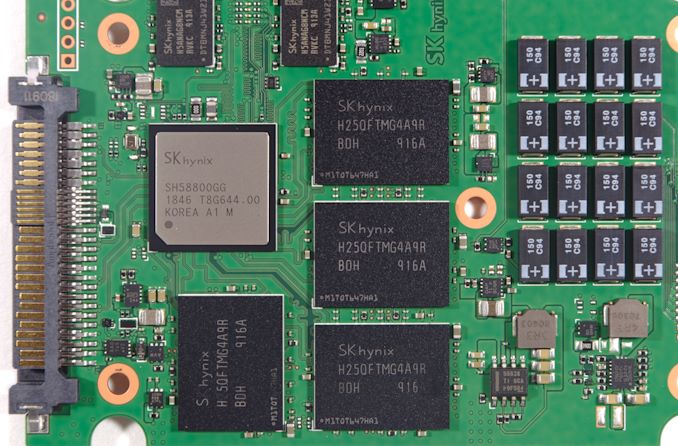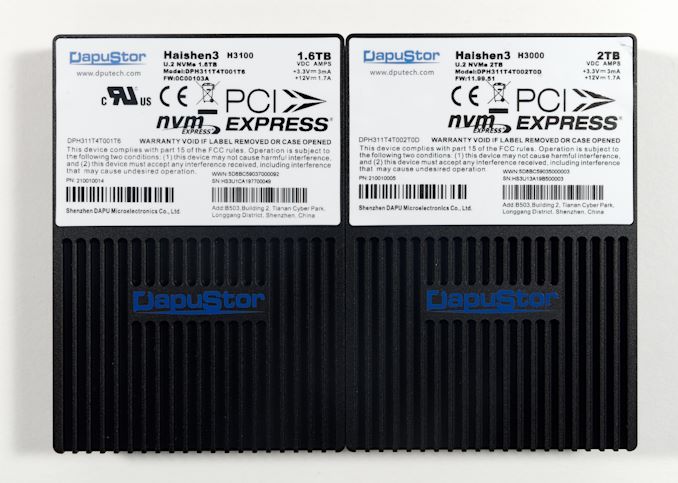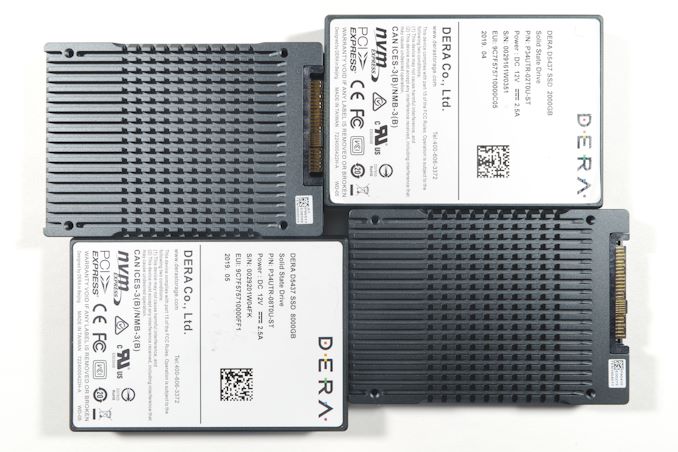Enterprise NVMe Round-Up 2: SK Hynix, Samsung, DapuStor and DERA
by Billy Tallis on February 14, 2020 11:15 AM ESTConclusion
Testing nine new drives drives at once makes it tricky to summarize the results with just a few conclusions. Each of the four manufacturers represented in this review are in very different situations requiring different strategies. In turn, the SSDs we've tested all have their own strengths and weaknesses. Since we're unable to offer real insight on how affordable these drives are to the large business customers they are primarily aimed at, we'll focus more on the tech itself.
The Samsung PM1725a is strictly speaking outdated, having been succeeded by a PM1725b with newer 3D NAND and a PM1735 with PCIe 4.0. But it's still a flagship model from the top SSD manufacturer, and we don't get to test those very often. Despite being two generations old, the PM1725a still holds some advantages over the latest and greatest from lower product segments. It has easily the highest read performance of any single SSD we can get our hands on, including the ability to deliver over 1000000 random read IOPS. It's fast enough that most software cannot even come close to fully using its performance potential. The PM1725a also carries a higher write endurance rating than most recent high-end models. However, its actual write performance is not the highest we've seen, and the older NAND and controller mean it sometimes struggles to match the latency of newer drives. The sheer scale of the drive also somewhat limits its usability—not every server can accommodate and make productive use of a drive that is this powerful. On the other hand, the fact that MyDigitalDiscount is currently selling a limited stock of them at consumer SSD pricing means a lot of customers can try out this class of drive for the first time.
The SK Hynix PE6011 targets the most mainstream parts of the datacenter market: high density, manageably low power, 1 DWPD endurance and a performance profile suited for mostly read-oriented workloads. They didn't skimp on capacity, offering up to 7.68TB in a 2.5"/7mm U.2 drive. This kind of drive can't hope to beat the big high-end drives on performance, but it may offer better value. It seems like the biggest challenge for SK Hynix right now is the NAND flash itself. The 72L TLC used in the PE6011 is their first generation of 3D NAND that's remotely competitive, but they have yet to truly get ahead of the rest of the industry despite constantly aiming for the highest layer counts. This 3D TLC seems to be a bit slower than what the other drives are working with, and that cannot be entirely overcome by close cooperation between their NAND, controller and firmware teams. However, they have managed to put together a drive that's decent all around, with no really serious deficiencies. All this drive needs to find success in the market is competitive pricing.
DapuStor's Haishen3 H3000 and H3100 drives have similar aims to the SK Hynix PE6011 and PE6031. The Haishen3 drives use a thicker U.2 form factor but cover pretty much the same capacity range and aim for similar performance and power levels. DapuStor's marketing has a particular focus on their drives' power efficiency, and for good reason: the Hashien3 drives are often far more efficient than the competitors we have tested. A lot of this is probably due to the component selection. With Kioxia 96L TLC NAND, these drives are at least a generation ahead of everything else in this review, and the choice of a Marvell controller seems to have worked out well. The performance of the Haishen3 drives is a bit more hit-and-miss than the SK Hynix PE6011. The Haishen3 is usually a little bit faster than the PE6011 for throughput, but its latency and QoS vary from well ahead to far behind the competition depending on the workload. Between the read oriented H3000 and the H3100 for mixed workloads, these drives have a lot of potential use cases, and the great power efficiency could lead to some real TCO advantages.
DERA's D5437 and D5457 have enough performance to be serious contenders in the high-end enterprise SSD market. Their in-house 16-channel TAI controller might not be quite as powerful or efficient as those from Samsung and Microchip/Microsemi, but it comes close enough - especially taking into account that the controller is a few years old at this point, and about due for a PCIe 4.0 update. It's not hard to see how they've scored major customers at home. Like DapuStor, DERA still has a fairly narrow product line, but they probably have the resources to diversify into other market segments without too much trouble. The big challenges for DERA are probably the relatively non-technical ones: dealing with the geopolitics of being part of the Tsinghua family of companies while trying to sell abroad (especially in the US). They probably won't be able to differentiate their products with the promised benefits of YMTC NAND flash any time soon, so they still need to cultivate a close relationship with one of the incumbent NAND manufacturers (currently Intel).














33 Comments
View All Comments
Billy Tallis - Tuesday, February 18, 2020 - link
The enterprise market is more serious about QA and product qualification. Phison got a consumer PCIe 4.0 controller out in the middle of 2019, but the quick-and-dirty approach they took for that isn't useful in the enterprise market.There are lots of consumer and enterprise PCIe 4.0 SSDs coming down the pipeline, but at the moment there's very little that has completed qualification and is ready for widespread production deployment. That was even more true back in November when testing for this review started.